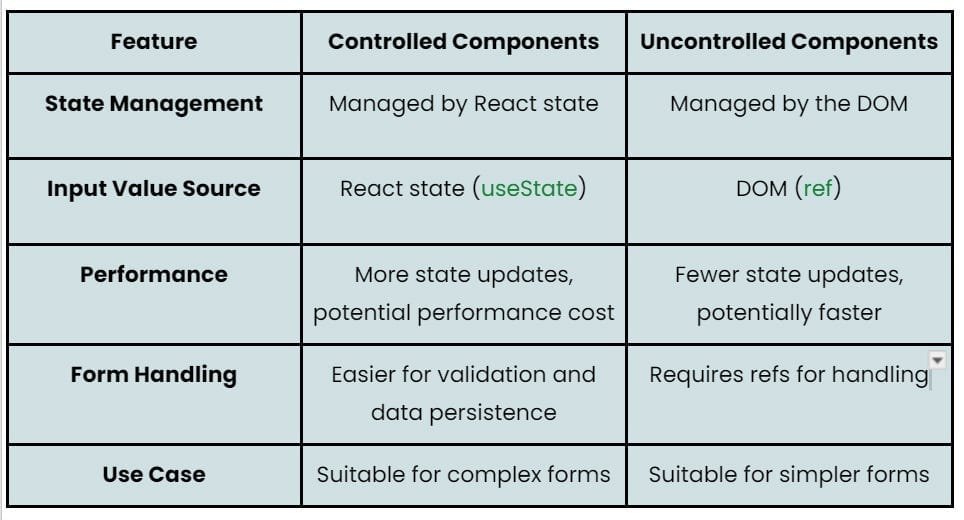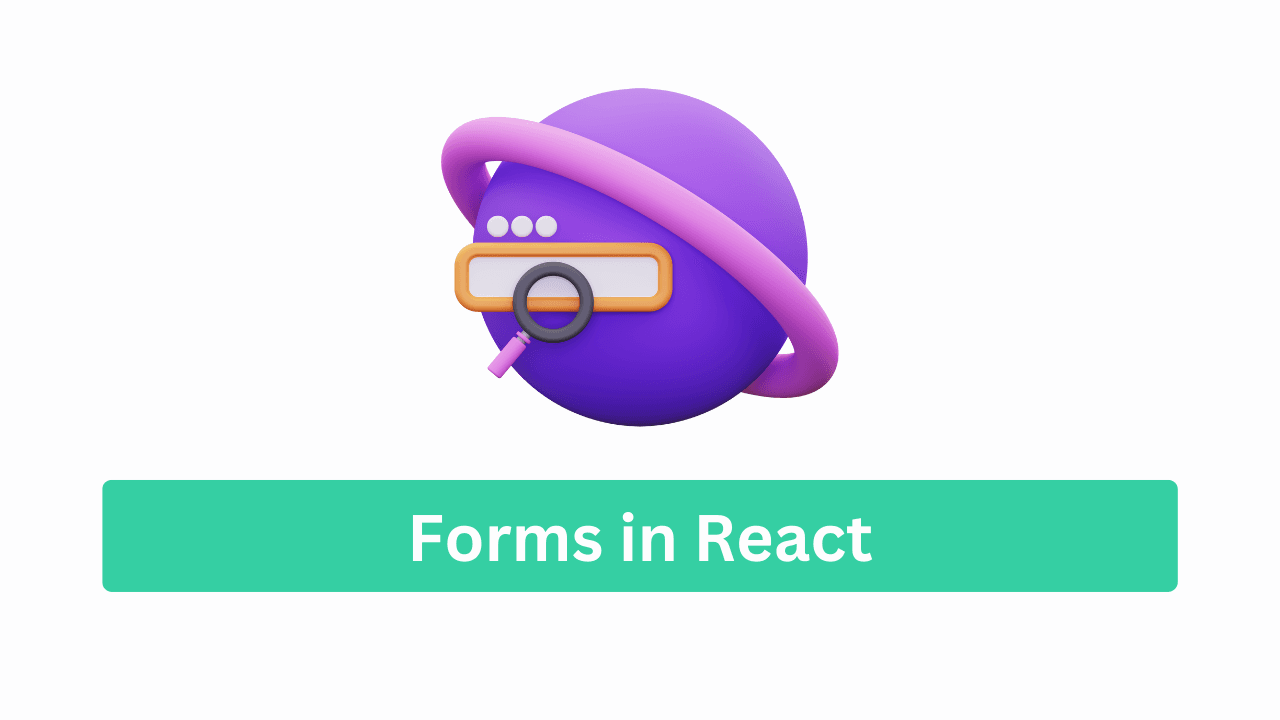📦 Why Forms Matter in Web Apps
Forms are like the way users talk to your website.
They let people:
- Sign up or log in
- Search for things
- Fill contact details
- Give feedback, and more!
React gives you powerful tools to handle these forms smoothly 💪
🧍 Controlled vs Uncontrolled Forms
Let’s start with the difference between Controlled and Uncontrolled components.
| Type | Controlled Form | Uncontrolled Form |
|---|---|---|
| Data Handling | React controls the form data | The DOM (browser) controls the form |
| Easy to Validate? | ✅ Yes | ❌ Tricky |
| Use Case | Most common in React apps | Rare cases, like quick demo |
✅ Controlled Component Example
jsxCopyEditimport { useState } from "react";
function MyForm() {
const [name, setName] = useState("");
const handleSubmit = (e) => {
e.preventDefault(); // Prevent page reload
alert(`Hello, ${name}!`);
};
return (
<form onSubmit={handleSubmit}>
<input
type="text"
value={name}
onChange={(e) => setName(e.target.value)}
placeholder="Enter your name"
/>
<button type="submit">Say Hi</button>
</form>
);
}
❌ Uncontrolled Component Example
jsxCopyEditimport { useRef } from "react";
function UncontrolledForm() {
const inputRef = useRef();
const handleSubmit = (e) => {
e.preventDefault();
alert(`Hello, ${inputRef.current.value}!`);
};
return (
<form onSubmit={handleSubmit}>
<input type="text" ref={inputRef} placeholder="Your name" />
<button type="submit">Submit</button>
</form>
);
}
🧠 Use controlled forms for better control and validation.
✍️ Handling Form Submissions
When a user clicks “Submit”, we often want to:
- Stop the page from reloading
- Validate input
- Send data somewhere (like an API)
Steps:
jsxCopyEditconst handleSubmit = (e) => {
e.preventDefault(); // Stops the page reload
// Add your logic here
};
You can even use console.log to check what the user typed.
🔎 Adding Validation
Let’s say we want to make sure the user enters a name:
jsxCopyEditconst handleSubmit = (e) => {
e.preventDefault();
if (!name.trim()) {
alert("Please enter a name");
return;
}
alert(`Welcome, ${name}`);
};
You can also:
- Check for emails
- Set minimum password lengths
- Show inline error messages
📋 Building Bigger Forms
Imagine a form with name, email, and password fields. Here’s a basic structure:
jsxCopyEditconst [form, setForm] = useState({ name: "", email: "", password: "" });
<input
name="email"
value={form.email}
onChange={(e) => setForm({ ...form, [e.target.name]: e.target.value })}
/>
✅ This method keeps all fields in one object. It’s clean and scalable.
🔧 Third-Party Helpers: Formik & React Hook Form
🚀 Formik
Formik simplifies form logic.
bashCopyEditnpm install formik
Example:
jsxCopyEditimport { useFormik } from "formik";
const formik = useFormik({
initialValues: { email: "" },
onSubmit: (values) => alert(JSON.stringify(values)),
});
🔧 React Hook Form
It’s fast, small, and easy to use.
bashCopyEditnpm install react-hook-form
Example:
jsxCopyEditimport { useForm } from "react-hook-form";
const { register, handleSubmit } = useForm();
<form onSubmit={handleSubmit((data) => console.log(data))}>
<input {...register("email")} />
<button type="submit">Submit</button>
</form>
👉 These tools help you save time and write cleaner code.
🧠 Controlled vs Uncontrolled – Summary Table
| Feature | Controlled | Uncontrolled |
|---|---|---|
| Recommended? | ✅ Yes | ❌ No |
| Data Source | useState | useRef |
| Best for | Real apps | Quick demos |
| Easy to validate | ✅ Yes | ❌ No |
📊 Infographic – Form Flow in React

🏁 Conclusion
Forms are super important in React apps.
They help users connect with your site 💬
Remember:
- Use controlled components
- Validate before submit ✅
- Use Formik or React Hook Form for big forms
📣 Want more awesome React content?
👉 Subscribe to Web Codder for hands-on tutorials and fun coding projects!
📺 YouTube: Web Codder
📸 Instagram: @web_codder_official
💬 Join us on WhatsApp for updates, tips, and challenges!

